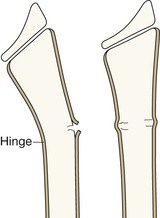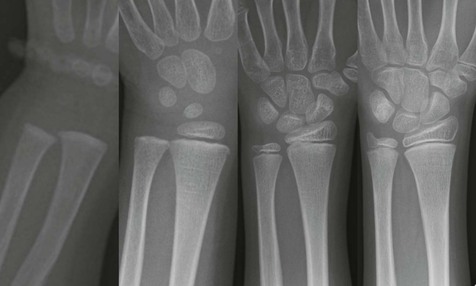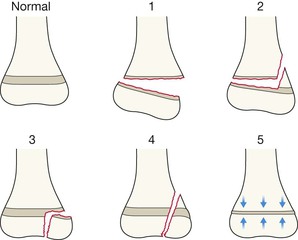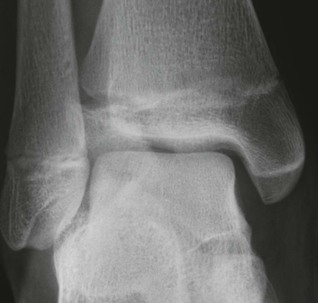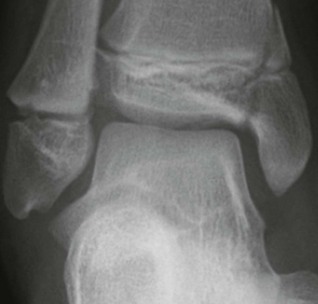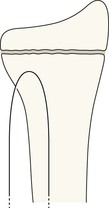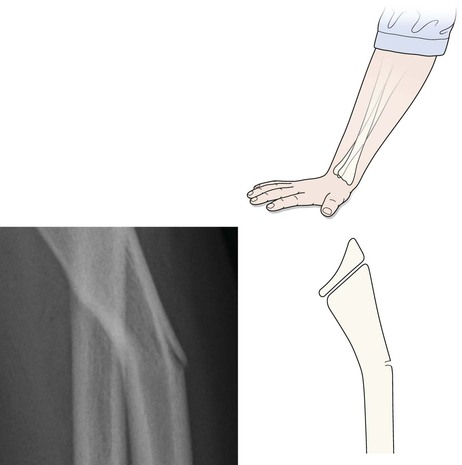Particular paediatric points
Bones in children are different1–4
“A child is not a small adult …”
This truism is particularly important in relation to paediatric bone injuries1
Child versus adult
There are three major differences between a child’s and an adult’s skeleton2–4.
1. Children have growth plates that:
□ have the consistency of hard rubber and act, in part, as shock absorbers
□ protect the joint surface from sustaining a comminuted fracture
2. Children have a thick periosteum that:
□ is not only thick but very, very, strong
□ acts as a hinge, which inhibits displacement when a fracture occurs.
3. Children’s bones have an inherently different structure to adults’ bones, being:
□ flexible, elastic, and plastic, allowing an injured bone to bend or to buckle.
The end of a long bone in a child
You need to be familiar with the normal radiographic appearance of the ends of the long bones in children. This will help you to detect the important injuries and will also protect you from labelling a normal developmental appearance as being abnormal.
A persistent lucent line is normal
A child’s long bone grows in length initially by forming layers of cartilage and gradually converting that cartilage into bone. This layering process takes place at the end of the bone at the site of the physis (also called the epiphyseal plate or the growth plate). The physis is made of cartilage and lies between the epiphysis and the diaphysis. Cartilage is lucent on a radiograph. The cartilaginous physis remains as a radiographic lucency until the child reaches skeletal maturity and stops growing. At that time the lucent physis fuses to the metaphysis (and also to the epiphysis). When fusion occurs the linear lucency that was the physis disappears.
Parts of the skeleton are not missing
An epiphysis is a secondary centre of ossification at the end of a long bone. Each epiphysis is initially composed solely of cartilage. As a consequence it looks as though nothing is there (take a look at a new born baby’s elbow region). Of course each of the epiphyses is present, but present as a radiolucent blob of cartilage. These invisible blobs enlarge slowly with age. Eventually they begin to ossify at their centres and become visible. Finally, these blobs of bone will fuse to the physis at maturity.
Fracture sites1,3
“The key to accurate diagnosis is a precisely accurate assessment of the radiographs.”2
Epiphyseal–metaphyseal (Salter–Harris) fractures
The growth plate (the physis) is a very vulnerable structure. The joint capsule, the surrounding ligaments and the muscle tendons are all much stronger than the cartilaginous physis.
A shearing or avulsion force applied to a joint is most likely to result in an injury at the weakest point, ie a fracture through the growth plate.
Most growth plate injuries will heal well without any resultant deformity. However, in a few patients, failure to recognise a growth plate injury may result in suboptimal treatment with a risk of premature fusion resulting in limb shortening. If only a part of the growth plate is injured, unequal growth may lead to deformity and disability.
The Salter–Harris classification
This classification links the radiographic appearance of the fracture to the clinical importance of the fracture. A Salter–Harris type 1 injury has a good prognosis whereas a Salter–Harris type 5 injury has a poor prognosis.
How to remember the Salter–Harris (SH) classification
| SH 1 | = S | is Separated (a widened physis) |
| SH 2 | = A | is Above the growth plate |
| SH 3 | = L | is beLow the growth plate |
| SH 4 | = T | is Through the growth plate |
| = E | is for nothing! | |
| SH 5 | = R | has a Rammed together growth plate |
Metaphyseal–diaphyseal fractures
When a child’s long bone is subjected to a longitudinal compression force (such as a fall on an outstretched hand), this can result in two common but different types of injury in the region of the metaphysis and proximal diaphysis.
Diaphyseal fractures6,7
A diaphyseal fracture: a break in the shaft of a long bone, well away from an epiphysis.


